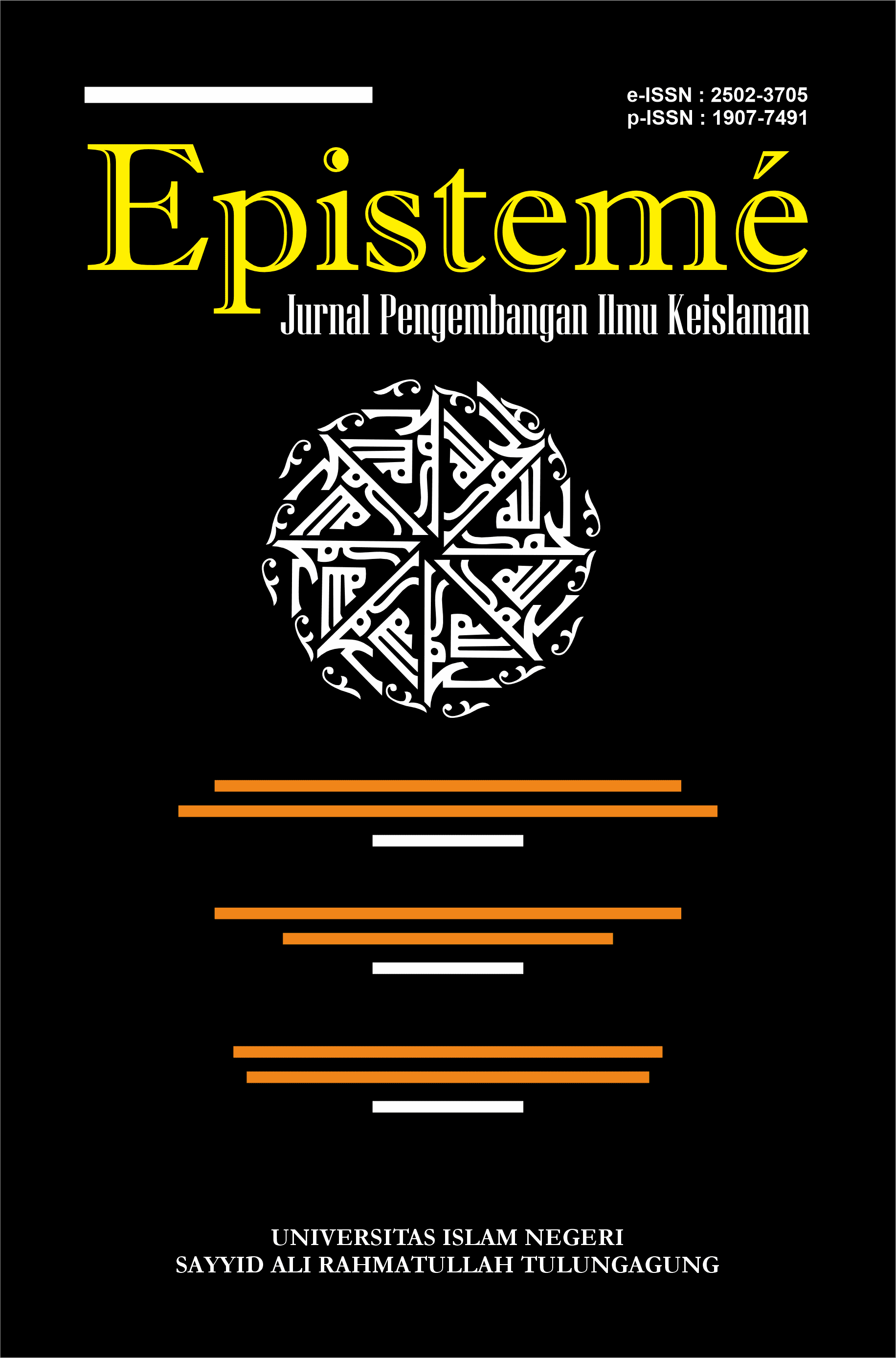Abstract
The article seeks to investigate the intersection of local-based religion legal system and state’s legal system. It focuses on the constitutional debates on the position and the status of Aceh Qanun Jinayat within the Indonesian legal system and how the Indonesian Supreme Court the Islamic penal law based on Aceh’s Qanun in their decisions. Using the legal research approach, this article begins with the background of the Qanun Jinayat implementation in Aceh, then discusses the constitutional debates on the position of the Qanun in the Indonesian legal system and ends with analyses of Supreme Court decisions on the application of the Qanun Jinayat in criminal cases in Aceh. This article argue that Aceh’s Qanun is similar to the other provincial regulation within the Indonesian legal system, which has limited areas to regulate the punishment in criminal cases. However, the paper found that although the Indonesian legal system forbids Aceh’s Qanun holds the penalty more severe than the National criminal law, the Supreme Court seems to accept these practices and use them in their decisions in Aceh’s criminal cases.
References
Aceh, Dinas Syariah Islam. Qanun Aceh Nomor 7 Tahun 2013 Tentang Hukum Acara Jinayat (2013). https://dsi.bireuenkab.go.id/media/2020.08/Qanun Aceh Nomor 7 Tahun 2013 Tentang Hukum Acara Jinayat.pdf.
Aceh, Gubernur Daerah Istimewa. Peraturan Daerah Propinsi Daerah Istimewa Aceh Nomor 5 Tahun 2000 Tentang Pelaksanaan Syariat Islam, 05 (2000).
Amsori, Amsori, and Jailani Jailani. “Legislasi Qanun Jinayat Aceh dalam Sistem Hukum Nasional.” Ar Raniry: International Journal of Islamic Studies 4, no. 2 (2018): 221–56. https://doi.org/10.20859/jar.v4i2.138.
Arfiansyah. “State Legal Pluralism The Intersection of Adat, Jinayah, and National Penal Law in Gayo, Indonesia.” Leiden, 2022.
Arfiansyah, A. “State Legal Pluralism: The Intersection of Adat, Jinayah, and National Penal Law in Gayo, Indonesia.” Universiteit Leiden, The Netherlands, 2022. https://scholarlypublications. universiteitleiden.nl/handle/1887/3463689.
Aspinall, Edward. “The Helsinki Agreement : A More Promising Basis for Peace in Aceh?” In East-West Center Washington, Policy Stu., 20:104. Washington, D.C.: East-West Center Washington, 2005.
Aziz, Samsudin. “Kanunisasi Fikih Jinayat Kontemporer: Studi Materi Muatan Qānūn Jināyat Aceh Dan Brunei Darussalam.” Al-Ahkam 24, no. 2 (2014): 173. https://doi.org/10.21580/ahkam.2014.24.2.145.
Butt, S. “‘Religious Conservatism, Islamic Criminal Law and the Judiciary in Indonesia: A Tale of Three Courts,.’” The Journal of Legal Pluralism and Unofficial Law 50 (2018): 402–34.
Butt, Simon, and Tim Lindsey. Indonesian Law. Oxford: Oxford University Press, 2018.
D. Gusman. “The Characteristic of Syar’iyah Court Decision into Unitary State of the Republic of Indonesia: Syar’iyah Court Regional Cases of Nanggroe Aceh Darussalam Province.” Riau Law Journal 07, no. 01 (2023): 9-113. https://doi.org/http://dx.doi.org/10.30652/rlj.v7i1.8073.
Daniel S. Lev. “Colonial Law and the Genesis of the Indonesian State.” In Legal Evolution and Political Authority in Indonesia, 13–31. Leiden: Brill Nijhoff, 2000.
Dinas Syariah Islam Aceh. Qanun Aceh Nomor 11 tahun 2006 (2006). https://dsi.acehprov.go.id/halaman/qanun-perda.
Djatmiko, Irfan Fachruddin & Hary. Putusan Mahkamah Agung 60 P/Hum/2015 (n.d.). https://putusan3.mahkamahagung.go.id/direktori/putusan/f1310477d04907315b9effbc3116577f.html.
Febriandi, Yogi, Muhammad Ansor, and Nursiti. “Seeking Justice through Qanun Jinayat: The Narratives of Female Victims of Sexual Violence in Aceh, Indonesia.” Qudus International Journal of Islamic Studies 9, no. 1 (2021): 103–40. https://doi.org/10.21043/QIJIS.V9I1.8029.
Halim, Abdul. “Non-Muslims in the Qanun Jinayat and the Choice of Law in Sharia Courts in Aceh.” Human Rights Review 23, no. 2 (2022): 265–88. https://doi.org/10.1007/s12142-021-00645-x.
Ikhwan, M, and Muhammad Heikal Daudy. “Pelembagaan Hukum Jinayat di Aceh Sebagai Bagian Sistem Hukum Pidana Indonesia.” Islam Universalia: International Journal of Islamic Studies and Social Sciences 1, no. 2 (2019): 180–212. https://doi.org/10.56613/islam-universalia.v1i2.119.
Jan Michiel Otto (ed.). “Sharia Incorporated: A Comparative Overview of the Legal Systems of Twelve Muslim Countries in Past and Present.” In Law, Governance, and Development Research, 529–52. Leiden: Leiden University Press, 2010. https://doi.org/10.1515/9789400600171-015.
Llewellyn, Aisyah. “‘Shame and Humiliation’: Aceh’s Islamic Law Violates Human Rights.” Al Jazeera, 2019. https://www.aljazeera.com/news/2019/6/28/shame-and-humiliation-acehs-islamic-law-violates-human-rights.
Manan, Bagir. Hukum Positif Indonesia. Yogyakarta: FH UII Press, 2014.
Miller, Michelle Ann. “The Nanggroe Aceh Darussalam Law: A Serious Response to Acehnese Separatism?” Asian Ethnicity 5, no. 3 (October 1, 2004): 333–51. https://doi.org/10.1080/1463136042000259789.
Pasal 7 UU 12 Tahun 2011 tentang Pembentukan Peraturan Perundang-undangan (2011).
Penjelasan Undang-Undang 12 Tahun 2011 Tentang Pembentukan Peraturan Perundang-undangan. (n.d.).
Perempuan, Institute for Criminal Justice Reform dan Solidaritas. Permohonan Keberatan terhadap Qanun Aceh No. 6 Tahun 2014 tentang Hukum Jinayat (2016). https://icjr.or.id/wp-content/uploads/2016/05/Permohonan-JR-Qanun-Jinayat-Final.pdf.
Razi, Muhammad, and Khairil Azmin Mokhtar. “The Challenges of Shariah Penal Code and Legal Pluralism in Aceh.” Jurnal Media Hukum 27, no. 02 (2020). https://doi.org/10.18196/jmh.20200151.
RI, Sekretariat Jenderal MPR. Undang-Undang Dasar Negara Republik Indonesia Tahun 1945 (2020).
Zainul Fuad, Surya Darma & Muhibbuthabry. “Wither Qanun Jinayat? The Legal and Social Developments of Islamic Criminal Law in Indonesia.” Cogent Social Sciences 08, no. 01 (2022). https://doi.org/https://doi.org/10.1080/23311886.2022.2053269.

Epistemé: Jurnal Pengembangan Ilmu Keislaman is licensed under a Creative Commons Attribution-NonCommercial-NoDerivatives 4.0 International License.
Licensing
Copyright © The Author(s). Published by Pascasarjana, Sayyid Ali Rahmatullah State Islamic University Tulungagung, Indonesia.
This is an Open Access article distributed under the terms of Attribution-NonCommercial-NoDerivatives 4.0.

